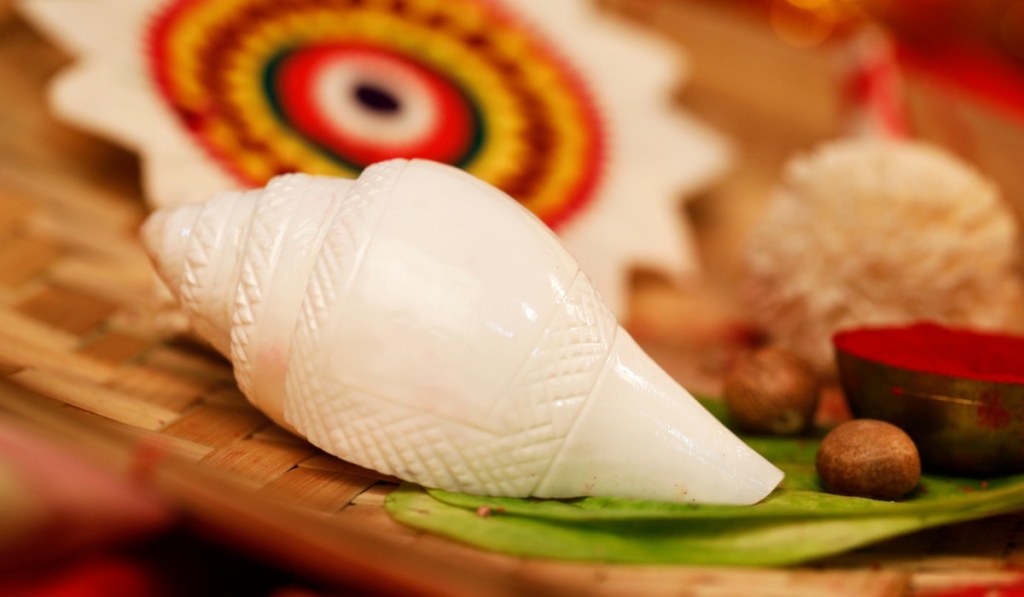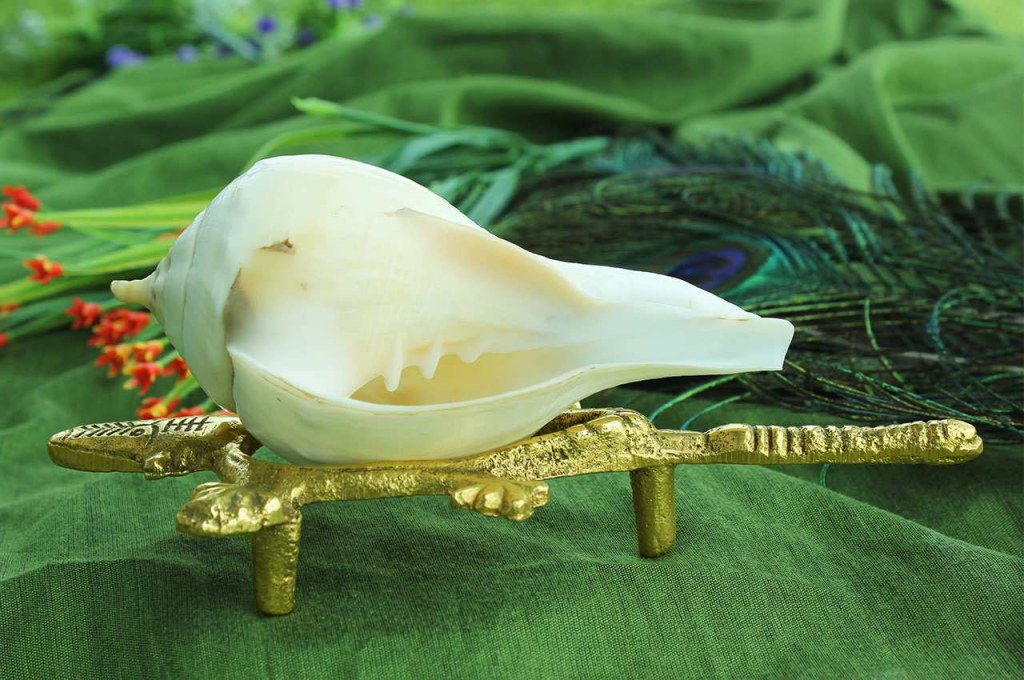Unlock The Power Of The Sacred Shankh: Optimal Positioning In Your Pooja Room For Enhanced Spiritual Energy!
Position of Shankh in Pooja Room
Introduction
Dear Room Enthusiast,
2 Picture Gallery: Unlock The Power Of The Sacred Shankh: Optimal Positioning In Your Pooja Room For Enhanced Spiritual Energy!
Welcome to our comprehensive guide on the position of Shankh in the pooja room. The Shankh, also known as a conch shell, holds a significant place in Hindu rituals and ceremonies. In this article, we will explore the importance of the Shankh in the pooja room and its positioning. Understanding the significance of the Shankh and its placement will help create a harmonious and auspicious environment for your prayers and devotion.
The What of Shankh in Pooja Room

Image Source: housing.com
🐚 The Shankh is a sacred object in Hinduism, symbolizing purity, divinity, and the presence of gods and goddesses. It is a conch shell that is blown during religious ceremonies and rituals.
🐚 The position of the Shankh in the pooja room is crucial as it affects the energy flow and the vibrations within the space.

Image Source: blogspot.com
🐚 Proper placement of the Shankh enhances the spiritual atmosphere and amplifies the positive energy during prayers and meditation.
🐚 The Shankh is also considered a symbol of Lord Vishnu, one of the principal deities in Hinduism.
🐚 It is believed that the sound produced by blowing the Shankh can purify the surroundings and eliminate negative energies.
🐚 The Shankh is often placed alongside other sacred items such as the deity idols, incense sticks, and sacred scriptures in the pooja room.
🐚 The color, size, and shape of the Shankh can vary, but the right positioning remains essential for maximum spiritual benefits.
The Who of Shankh in Pooja Room
🐚 The Shankh is revered by Hindus, particularly those who follow Vaishnavism, which worships Lord Vishnu.
🐚 Individuals who believe in the power of spiritual vibrations and seek a deeper connection with the divine can benefit from having a Shankh in their pooja room.
🐚 Anyone who wishes to create a sacred and peaceful atmosphere during prayers, meditation, and other religious activities can incorporate the Shankh into their pooja room.
The When of Shankh in Pooja Room
🐚 The Shankh can be placed in the pooja room at any time, as long as it is done with reverence and devotion.
🐚 It is advised to clean the Shankh thoroughly before placing it in the pooja room to remove any impurities.
🐚 The Shankh can be positioned in the pooja room during housewarming ceremonies, festivals, or auspicious occasions.
🐚 Regular cleansing and maintenance of the Shankh are essential to preserve its spiritual potency and ensure it remains in good condition.
The Where of Shankh in Pooja Room
🐚 The Shankh should be placed in the northeast corner of the pooja room, facing towards the southwest direction.
🐚 The northeast corner is considered highly auspicious and is associated with prosperity, spiritual growth, and positive energy flow.
🐚 Ensure that the Shankh is positioned on a clean and sacred cloth or a wooden pedestal.
🐚 It is recommended to keep the Shankh at a slightly elevated level compared to other items in the pooja room.
🐚 Avoid placing the Shankh directly on the ground or on the floor.
🐚 The Shankh should be easily accessible for rituals and can be adorned with flowers or sacred strings.
The Why of Shankh in Pooja Room
🐚 The presence of the Shankh in the pooja room creates a spiritually charged environment and enhances the overall positive vibrations.
🐚 Blowing the Shankh before starting any religious activity is believed to purify the surroundings and ward off negative energies.
🐚 The sound produced by the Shankh is said to awaken the divine energies and invite the blessings of the deities.
🐚 Placing the Shankh in the pooja room signifies the devotee’s commitment to spiritual practices and devotion.
🐚 The Shankh is believed to bring peace, tranquility, and harmony to the household.
The How of Shankh in Pooja Room
🐚 Start by cleaning the Shankh with water, preferably sacred water like Gangajal, and wipe it dry with a clean cloth.
🐚 Find the northeast corner of your pooja room and place the Shankh on a clean cloth or wooden pedestal.
🐚 Ensure that the Shankh is positioned facing the southwest direction.
🐚 You can decorate the Shankh with flowers, sacred strings, or other auspicious materials.
🐚 Regularly clean and maintain the Shankh to preserve its spiritual energy and vibrancy.
🐚 During religious ceremonies or while performing prayers, gently blow the Shankh to invoke divine blessings and purify the environment.
Advantages and Disadvantages of Position of Shankh in Pooja Room
Advantages:
🐚 The Shankh enhances the spiritual ambiance of the pooja room and creates a positive atmosphere for prayers and meditation.
🐚 It purifies the surroundings and eliminates negative energies, promoting inner peace and tranquility.
🐚 The sound produced by blowing the Shankh is believed to awaken divine energies and invite the blessings of the deities.
🐚 Placing the Shankh in the pooja room signifies devotion, commitment to spiritual practices, and reverence towards the divine.
Disadvantages:
🐚 Improper positioning or neglecting the maintenance of the Shankh can reduce its spiritual effectiveness.
🐚 Some individuals may find the sound produced by blowing the Shankh unsettling or too loud.
🐚 The Shankh requires regular cleaning and care to preserve its vibrancy and spiritual energy.
Frequently Asked Questions
Q: Can I place more than one Shankh in the pooja room?
A: Yes, you can place multiple Shankhs in the pooja room, provided you follow the guidelines for their positioning and maintain them properly.
Q: Can the Shankh be placed in any other room apart from the pooja room?
A: While the pooja room is the ideal place for the Shankh, you can also position it in other areas of your home, such as the living room or meditation space, to create a spiritually uplifting environment.
Q: Is it necessary to blow the Shankh during every prayer or ritual?
A: Blowing the Shankh is not mandatory for every prayer or ritual. It can be done based on personal preference and the significance of the occasion.
Q: How often should I clean the Shankh?
A: It is recommended to clean the Shankh at least once a month or as needed to keep it free from dust and maintain its spiritual potency.
Q: Can I use an artificial Shankh instead of a real one?
A: While a real Shankh is preferred, you can use an artificial Shankh made of materials like resin or metal if a genuine one is not available. However, the spiritual significance may differ.
Conclusion
Incorporating the Shankh in the right position within your pooja room can greatly enhance the spiritual ambiance and create a sacred space for your prayers and devotion. By following the guidelines mentioned in this article, you can benefit from the positive vibrations and divine blessings that the Shankh brings. Remember to clean and maintain the Shankh regularly to preserve its spiritual potency. May your spiritual journey be filled with peace, harmony, and divine grace.
Final Remarks
Dear Room Enthusiast,
The information provided in this article is based on traditional beliefs and practices. While the position of the Shankh in the pooja room holds cultural and religious significance, its effectiveness may vary for different individuals. It is always recommended to follow your own beliefs and consult with a religious authority or expert if you have any specific concerns or queries. The decision to incorporate the Shankh in your pooja room is a personal choice, and it should be done with reverence and devotion. May your spiritual endeavors be blessed.
This post topic: Room



